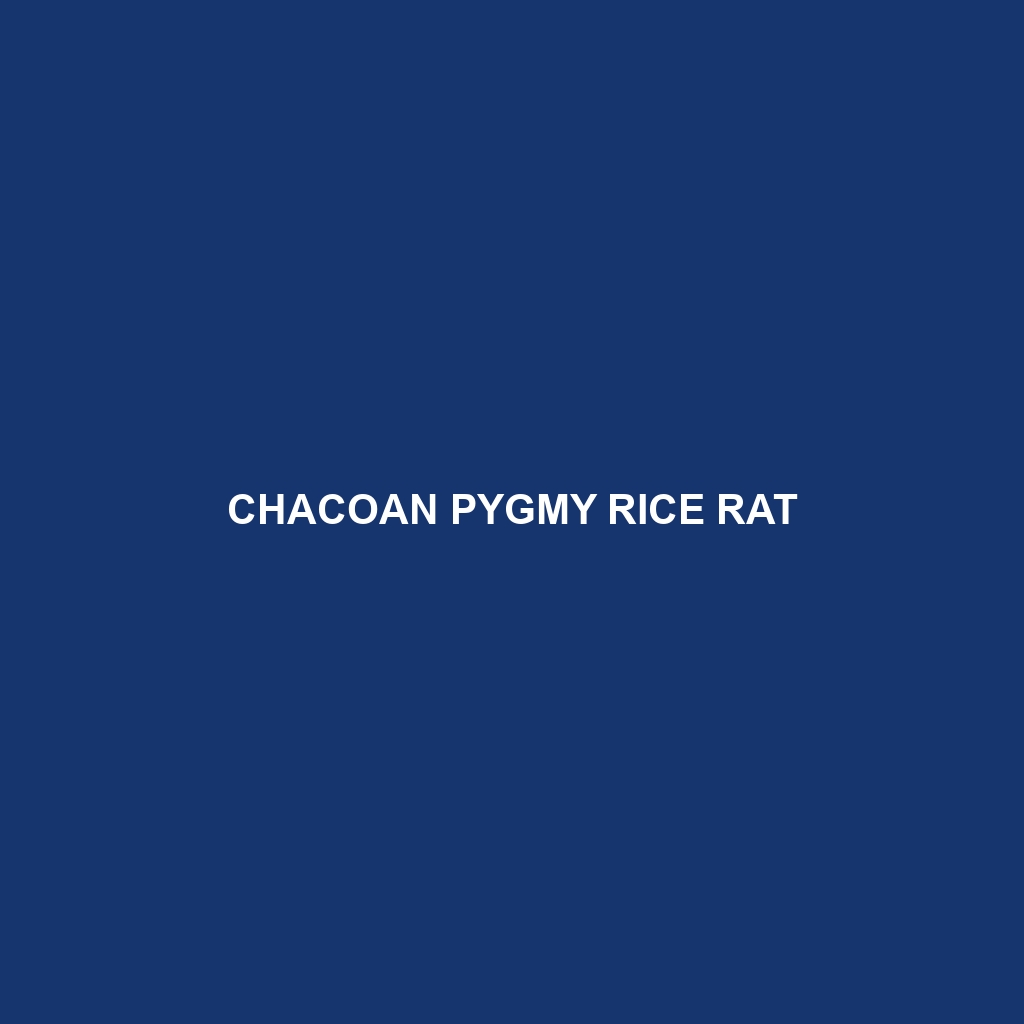Chacoan Pygmy Rice Rat
Common Name: Chacoan Pygmy Rice Rat
Scientific Name: Oligoryzomys chacoensis
Habitat
The Chacoan Pygmy Rice Rat primarily inhabits the Chaco region of Argentina, Paraguay, and Bolivia. This species thrives in wetlands, tropical forests, and grasslands, often found near water bodies such as marshes and rivers. The habitat is characterized by its dense vegetation, which provides cover and food sources.
Physical Characteristics
The Chacoan Pygmy Rice Rat is a small mammal, typically measuring around 10 to 15 centimeters in body length, with an additional 10 to 12 centimeters of tail. Its fur is generally a mix of brown and gray, with a lighter underbelly. Distinctive features include large ears and whiskers that help in navigation through dense vegetation. The compact size and coloration assist in camouflage, providing protection from predators.
Behavior
Known for its nocturnal activity, the Chacoan Pygmy Rice Rat exhibits behaviors typical of small rodents, such as burrowing and climbing. This species is social, often seen foraging in small groups. Their keen sense of smell aids in locating food sources and avoiding danger. Additionally, they are known to construct nests from grass and reeds near water sources.
Diet
The Chacoan Pygmy Rice Rat primarily feeds on a variety of grains, seeds, and aquatic plants. They are opportunistic feeders, taking advantage of the abundant food sources in their wetland environments. Their diet also includes fruits and insects, showcasing their adaptability in feeding habits.
Reproduction
Breeding typically occurs in the warm months, with females producing up to four offspring per litter. The gestation period is about 25 days, after which the young are born blind and hairless. Maternal care is strong, with mothers nurturing their young until they are capable of independent foraging.
Conservation Status
The Chacoan Pygmy Rice Rat is currently classified as vulnerable due to habitat loss from deforestation and agricultural expansion. Conservation efforts are underway to protect their natural habitats and raise awareness about their declining populations.
Interesting Facts
One fascinating fact about the Chacoan Pygmy Rice Rat is its ability to thrive in both wet and dry conditions. This adaptability is crucial as its environment faces seasonal changes. Additionally, while they are primarily terrestrial, they are skilled climbers, often seen foraging in trees during certain times of the year.
Role in Ecosystem
The Chacoan Pygmy Rice Rat plays a vital role in its ecosystem by acting as both a herbivore and prey for larger animals. Their feeding habits help in the dispersal of seeds, promoting plant growth. The species contributes to the biodiversity of the Chaco region and helps maintain the ecological balance.
